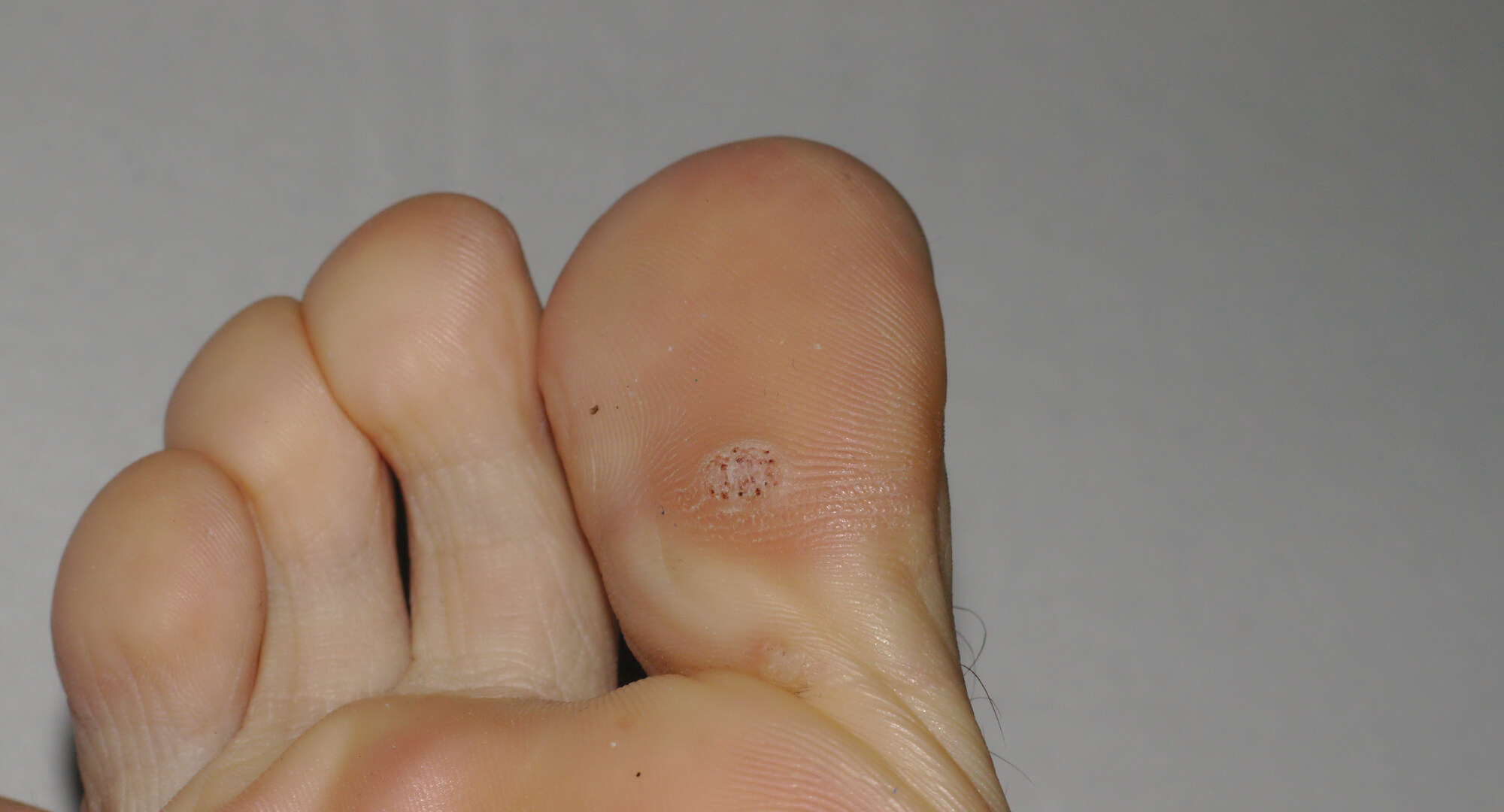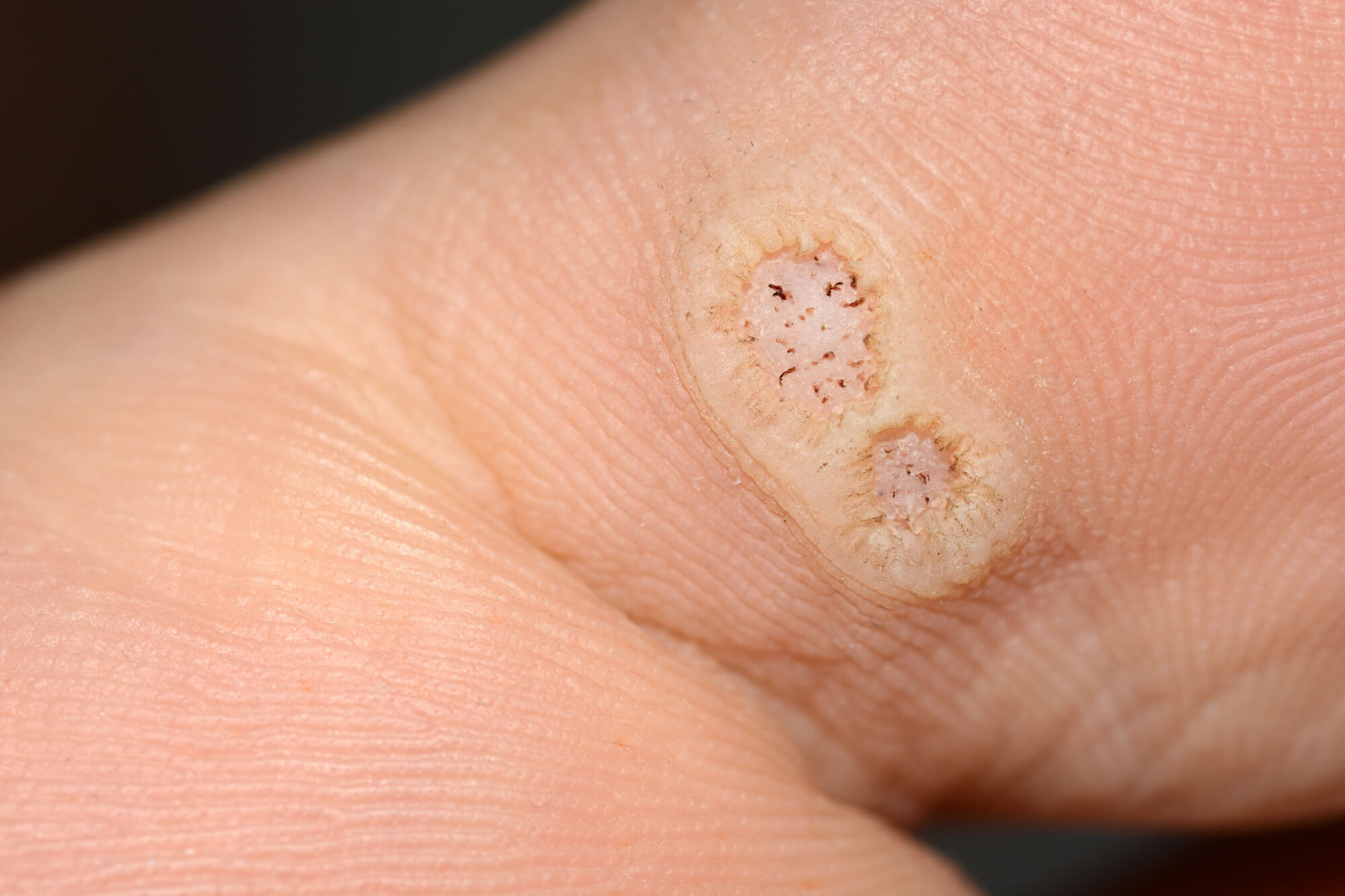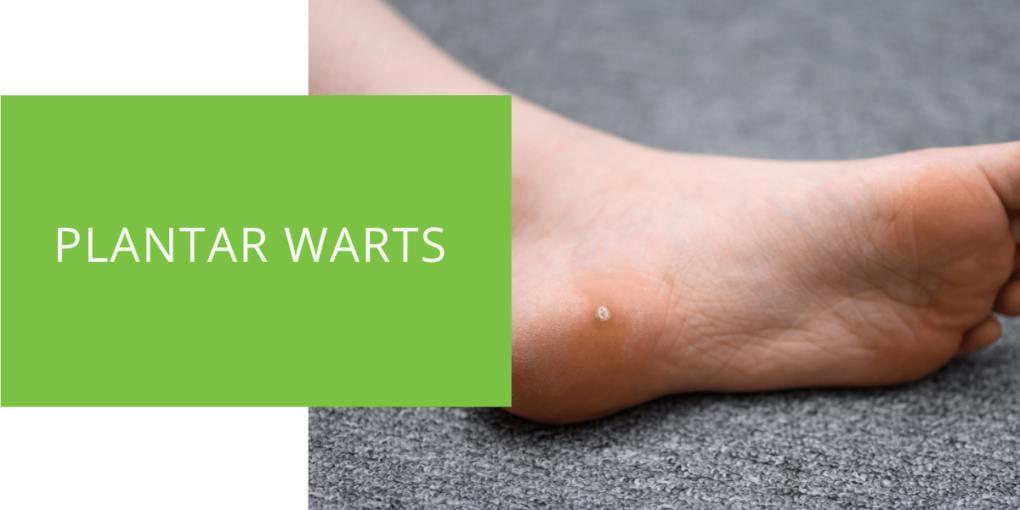Plantar Warts: Causes, Symptoms & Treatment
Plantar warts are a common foot condition caused by the human papillomavirus (HPV). These warts can be painful and unsightly and are typically found on the soles of the feet. In this article, we will explore the causes of plantar warts, the symptoms to look out for, and the various treatment options available. We will also discuss ways to prevent plantar warts from developing.
What are Plantar Warts?
A plantar wart is a small, fleshy growth that appears on the soles of the feet. It is caused by the HPV virus, which enters the skin through tiny cuts or abrasions. Plantar warts differ from other types because they grow into the skin rather than out of it. This is why they are often more painful and difficult to treat.
How They Develop
When the HPV virus enters the skin, it causes the top layer of skin cells to grow more rapidly than normal. This results in the formation of a wart. Plantar warts are typically found on the soles of the feet because this area of the body experiences a lot of pressure and friction, making it easier for the virus to enter the skin.

Causes of Plantar Warts
Human Papillomavirus (HPV) Infection
As mentioned, plantar warts are caused by the HPV virus. There are over 100 different types of HPV, and different types can cause different types of warts. The type of HPV that causes plantar warts is typically found in warm, damp environments, such as locker rooms, public showers, and pool areas.
Walking Barefoot in Public Areas
One of the main ways that the HPV virus can enter the skin is through direct contact with a wart. If you walk barefoot in public areas where the virus is present, you are at an increased risk of developing plantar warts. It is important to wear shoes or sandals in these areas to protect your feet.
Compromised Immune System
If your immune system is not functioning properly, you may be more susceptible to developing plantar warts. People with weakened immune systems, such as those with HIV/AIDS or cancer, may be at an increased risk.

Symptoms of Plantar Warts
Appearance
Plantar warts often appear as small, fleshy growths on the soles of the feet. They can be rough or smooth and may have black dots (which are actually small, clotted blood vessels) on the surface. Plantar warts are typically round or oval in shape and can range in size from a few millimeters to several centimeters.
Location
Plantar warts are most commonly found on the heels or ball of the foot, although they can also appear on the toes or elsewhere on the soles of the feet. They are often found in areas of the foot that experience the most pressure and friction, such as the heels and balls of the feet.
Pain and Discomfort
One of the most common symptoms of plantar warts is pain and discomfort. This is because the warts grow into the skin rather than out of it, and can press against the underlying tissues and nerves. The pressure and friction from walking and standing can also cause pain and discomfort.
Plantar warts can be especially painful when they are located on weight-bearing areas of the foot, such as the heels or balls of the feet. They can also cause discomfort when wearing certain types of shoes, such as those with a narrow toe box or high heels.

Treatment Options for Plantar Warts
If you suspect a plantar wart, it is important to see a podiatrist or dermatologist for proper diagnosis and treatment. These professionals can recommend the most appropriate treatment based on the wart's location, size, and severity.
Over-the-Counter Treatments
There are several over-the-counter (OTC) treatments available for plantar warts. These include topical medications that contain salicylic acid, which helps to soften and remove the top layer of skin. OTC treatments may be applied directly to the wart and covered with a bandage. It is important to follow the instructions on the product label carefully, as overuse of salicylic acid can damage the surrounding skin.
Prescription Treatments
In some cases, a stronger treatment may be necessary to remove a plantar wart. A podiatrist or dermatologist may prescribe a topical medication or injection that contains a higher concentration of salicylic acid or other wart-removing agents. These treatments may be more effective but can also be more expensive and cause more side effects.
Home Remedies
Several home remedies may help to remove plantar warts. One popular home remedy is the use of duct tape. To use this method, place a piece of duct tape over the wart and leave it on for several days. Then, remove the tape and soak the wart in water. Gently rub the surface of the wart with a pumice stone or emery board to remove the dead skin. Repeat this process until the wart is gone.
Another home remedy is the use of vinegar. To use this method, soak a cotton ball in vinegar and apply it to the wart. Cover the cotton ball with a bandage and leave it on overnight. Repeat this process until the wart is gone.
Surgical Options
In severe cases, or if other treatments have not been successful, a podiatrist or dermatologist may recommend surgical removal of the plantar wart. This can be done through various methods, such as cryotherapy (freezing the wart with liquid nitrogen), laser surgery, or surgical excision. Surgical removal of a plantar wart is typically a more invasive and expensive option and may require a period of recovery.

Preventing Plantar Warts
The best way to prevent plantar warts is to avoid direct contact with the HPV virus. Here are some tips to help keep your feet healthy and wart-free:
Wearing Shoes in Public Areas
As mentioned, the HPV virus that causes plantar warts is often found in warm, damp environments such as locker rooms, public showers, and pool areas. To reduce your risk of exposure, it is important to wear shoes or sandals in these areas. This will help protect your feet from the virus and other potential contaminants.
Avoiding Direct Contact with Warts
If you or someone you know has a plantar wart, it is important to avoid direct contact with the wart. This means not sharing towels, socks, shoes, or other personal items with the infected person. It is also a good idea to wash your hands frequently, especially after touching a wart or any surface that may have come into contact with a wart.
Maintaining Good Hygiene
Good hygiene is important for preventing the spread of plantar warts and other foot infections. This includes washing your feet daily with soap and water, drying your feet thoroughly, and wearing clean socks and shoes. Avoid walking barefoot in public areas is also a good idea, as this can increase your risk of exposure to the HPV virus.
Boosting the Immune System
A strong immune system is key to preventing the development of plantar warts and other infections. To boost your immune system, eating a healthy diet, exercising, and getting enough sleep is important. It is also a good idea to avoid smoking and excessive alcohol consumption, as these can weaken the immune system.
Conclusion
Plantar warts are a common foot condition caused by the HPV virus. They can be painful and unsightly and can be found on the soles of the feet. Several treatment options are available, ranging from OTC medications to surgical removal. The best way to prevent plantar warts is to avoid direct contact with the virus, maintain good hygiene, and boost the immune system. If you think you may have a plantar wart, it is important to see a podiatrist or dermatologist for proper diagnosis and treatment.

